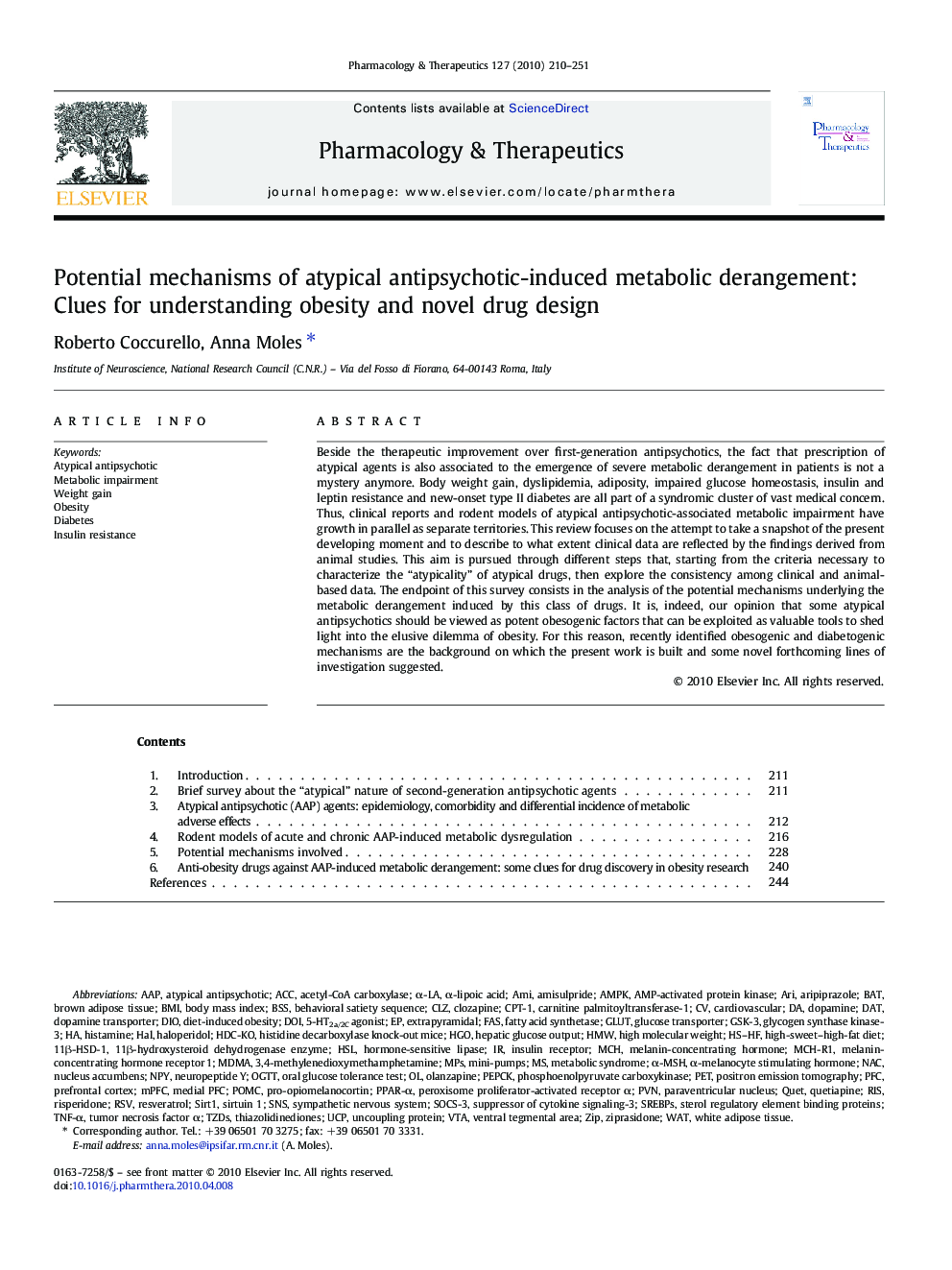| Article ID | Journal | Published Year | Pages | File Type |
|---|---|---|---|---|
| 2563474 | Pharmacology & Therapeutics | 2010 | 42 Pages |
Beside the therapeutic improvement over first-generation antipsychotics, the fact that prescription of atypical agents is also associated to the emergence of severe metabolic derangement in patients is not a mystery anymore. Body weight gain, dyslipidemia, adiposity, impaired glucose homeostasis, insulin and leptin resistance and new-onset type II diabetes are all part of a syndromic cluster of vast medical concern. Thus, clinical reports and rodent models of atypical antipsychotic-associated metabolic impairment have growth in parallel as separate territories. This review focuses on the attempt to take a snapshot of the present developing moment and to describe to what extent clinical data are reflected by the findings derived from animal studies. This aim is pursued through different steps that, starting from the criteria necessary to characterize the “atypicality” of atypical drugs, then explore the consistency among clinical and animal-based data. The endpoint of this survey consists in the analysis of the potential mechanisms underlying the metabolic derangement induced by this class of drugs. It is, indeed, our opinion that some atypical antipsychotics should be viewed as potent obesogenic factors that can be exploited as valuable tools to shed light into the elusive dilemma of obesity. For this reason, recently identified obesogenic and diabetogenic mechanisms are the background on which the present work is built and some novel forthcoming lines of investigation suggested.
